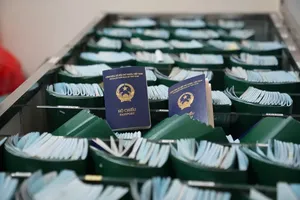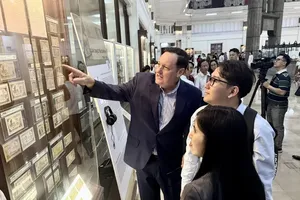 |
According to the central bank, reducing the interest rates is a flexible solution in line with current market conditions to realize the National Assembly and Government's goal on economic recovery. (Photo: VNA) |
Under Decision No. 313/QD-NHNN, the rediscount interest rate will be revised down from 4.5 percent per year to 3.5 percent per year; overnight lending rates in interbank electronic payments and loans to cover capital shortfalls in clearing payments of the SBV for credit institutions will be decreased from 7 percent per year to 6 percent per year. Particularly, the refunding interest rate will remain unchanged at 6 percent per year.
The SBV’s Decision No. 314/QD-NHNN adjusts the maximum short-term lending interest rate in the Vietnamese dong of credit institutions for borrowers to meet capital needs for economic sectors and industries in Circular No. 39/2016/TT-NHNN dated December 30, 2016.
Accordingly, the maximum short-term lending interest rate in the Vietnamese dong of credit institutions for borrowers to meet capital needs for several economic sectors and industries will be reduced from 5.5 percent per year to 5 percent per year.
The maximum short-term lending interest rate in the Vietnamese dong of people's credit funds and microfinance institutions will be decreased from 6.5 percent per year to 6 percent per year.
According to the central bank, reducing the interest rates is a flexible solution in line with current market conditions to realize the National Assembly and Government's goal on economic recovery as it helps reduce the market interest rates, contributing to removing difficulties for businesses and the economy.
The adjustment of the ceiling on short-term lending interest rates in the Vietnamese dong for priority sectors to 5 percent per year creates better conditions for businesses and people to access loans at a lower cost. However, the SBV is still cautious with the possibility of increasing inflation pressure as in the first two months of this year, Vietnam’s inflation rate has increased close to the target level of 4.5 percent while global inflation is forecasted to remain at a high level.
Central banks around the world have kept tightening their monetary policies, increasing and keeping interest rates at a high level, especially when the US Federal Reserve (Fed) will take moves after its next meeting slated on March 21-22 to respond to the impacts of the bankruptcy of Silicon Valley Bank (SVB) in the US.
Amid global and domestic economic uncertainties, the SBV will keep a close watch on developments of the domestic and foreign markets to continue adjusting regulatory interest rates
In February 2023, commercial banks in Vietnam continued to agree to reduce deposit interest rates to reduce lending interest rates, which expectedly supports businesses and the economy.
Accordingly, commercial banks have reduced deposit interest rates from 0.2-0.5 percent per year for a term of 6-12 months. Currently, the interest rate of newly arising deposits from commercial banks is about 6.7 percent per year and the interest rate of newly arising lending from commercial banks is about 9.4 percent per year.
Previously, in 2022, the SBV increased the regulatory interest rate by 1 percent on September 23 and October 25 as the US Federal Reserve continuously raised interest rates to curb inflation.














)

)







